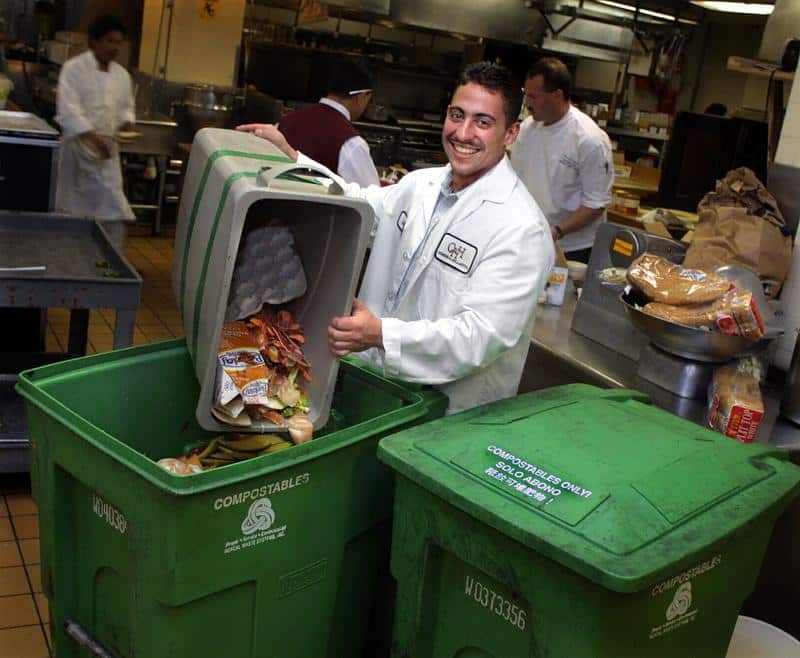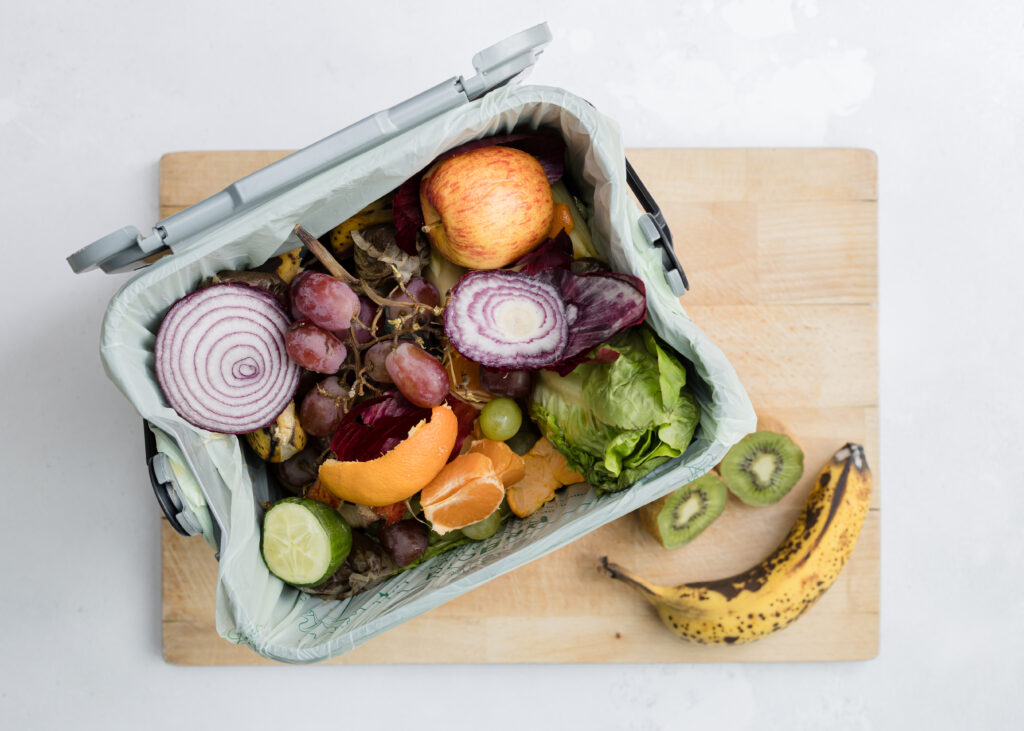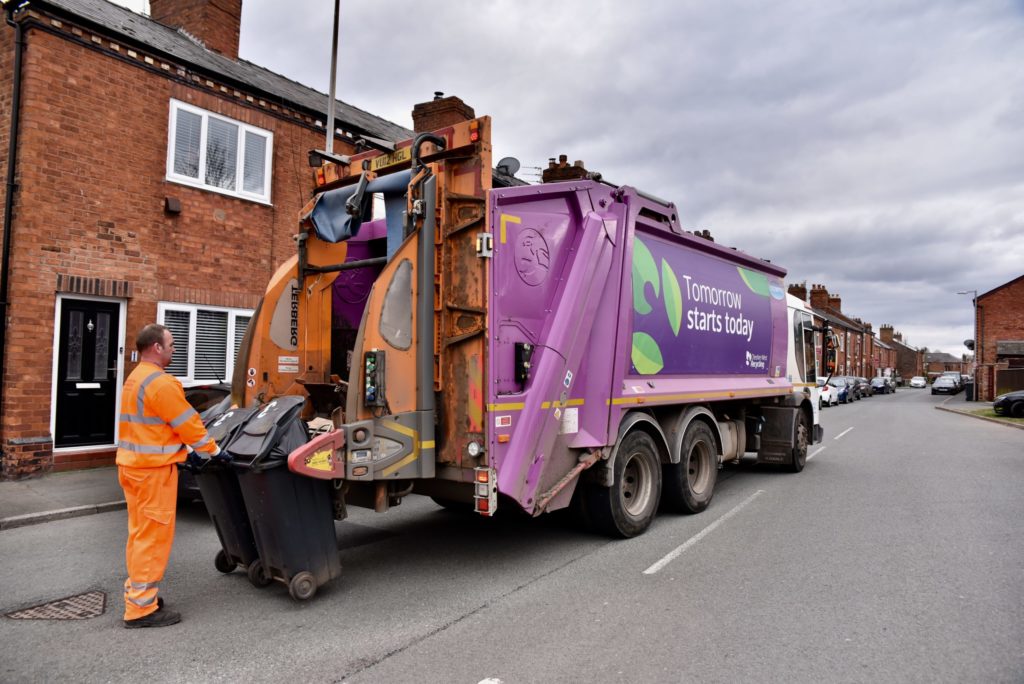The C40 Cities network was established in association with the Clinton Climate Initiative to bring together many of the largest cities in the world order to examine ways in which climate change can be addressed.
From 22 to 24 March 2010 it held its 6th quarterly meeting with the Greater London Authority hosting representatives from 30 of those cities. The representatives worked together to exchange information and also to visit some of the best resource recovery and waste treatment facilities throughout London.
This was the first occasion that the C40 Cities had devoted their attention to waste resource related issues to provide 'A Toolbox for Building a Sustainable Waste Management System'. In order to provide focus for this article from the plethora of information and ideas presented I will examine what some of these World cities are doing with the organic fraction of their waste.
The Conference
London's Mayor, Boris Johnson opened the workshop in his own inimitable style arguing the case for waste prevention through addressing the over-packaging and joked about the health and safety problems of mens' shirt packaging.
James Cleverly, who as a member of the GLA earlier this year took over the chairing of the London Waste and Recycling Board from the Mayor, outlined the waste treatment deficit faced by Greater London in order to meet the mayor's target to treat London's waste within its boundaries by 2025.
This capacity shortfall amounts to potentially three million tonnes per annum up to 2015 and perhaps an even greater amount beyond that time as current incineration capacity is being phased out due to the high costs of maintaining the Edmonton plant and potentially, in the longer term, even SELCHP.
To address the problem of managing waste as a resource there was an initial session on zero waste promotion. Natsuko Matsuoka, director of the Zero Waste Academy in Japan, described the experience of Kamikatsu, a small town of 2,000 people that in 2003 declared that it would achieve zero waste to landfill and incineration by 2020.
The zero waste programme has been made easier because the area is very rural and residents have been encouraged to compost their organic wastes. In addition, residents are required to deliver their residual waste to a recycling centre where they segregate their waste into 34 different categories. A recycling rate of nearly 80% has been achieved to date but is this replicable in a larger community?
New York
The veteran commissioner of the New York department of sanitation, John Doherty, spoke on the issue of waste reclamation from high rise, high density New York apartment areas and showed how difficult it was to encourage a recycling culture in such urban areas. The City undertook a $1m research project in 2006 in order to provide detailed data based on 92 sub-areas of New York City and its five boroughs to assess the results of their waste reclamation efforts.
It was not surprising that the lowest recovery areas were the public housing zones with the highest achieving areas the apartment blocks with caretakers. The types of waste reclaimed are also different, higher proportions of paper from higher quality housing units and higher proportions of metals and cans from the lower quality units.
The long-term record of New York City in collecting recyclables showed that for at least the past decade it has been at a plateau of 15/16% with slightly lower amounts from 2002 to 2004 when the City abandoned the collection of glass and plastics to save money. Despite the fact that the costs of waste disposal for New York are high nevertheless the cost of recovery of resources is still slightly higher.
On the other side of North America the smallest C40 member, San Francisco, with its 800,000 population, boasts a 70% recycling record. However, this includes all the C&I waste collected by the City's waste contractor, Recology, which has been the city's MSW collector for the past 90 years.
Just the MSW fraction would be less than 50%. The success of San Francisco is mainly due to its simple three cart separation system: blue for dry recyclable wastes, green for organics and black for the residuals. Last year the city employed 50 environmental stewards under the Obama economic stimulus package for door stepping to encourage waste prevention and further waste recovery in those areas identified as having the greatest potential for enhancement.
The organics are taken 60km out of the city to a 300 tonnes per day (tpd) capacity composting facility, operated by Norcal. The site has been progressively upgraded in order to address potential odour problems and to ensure that the site can handle up to 600tpd. The site therefore now uses negative air pressure to draw air into the compost piles and potential odour through bio-filters.
Canada
North of the border, Toronto is moving towards its 70% recycling target by changing the way in which the city funds its waste management service. It is now effectively a utility, with the city's Solid Waste Management Services' costs separated from the general city tax base. Therefore new funds can be raised to build and operate new waste diversion services.
Also because residents and small businesses are now charged only for residual waste there is a huge incentive to divert the maximum amount of waste to recycling. A question was rightly raised as to whether with this and other systems it was appropriate to load all the costs onto residual waste management. Generally it was agreed that there should be a minimum amount paid as there are waste management costs that are borne by every resident irrespective of their residual waste amounts.
I used my own speech to show that enhancing waste management at every level provided progressively improved reductions of GHG emissions. I also pointed out that there was a new version of the ISWA White Paper on Waste and Climate Change updated in the light of further comments received after its publication immediately before the CoP15 meeting in Copenhagen.
One of the case studies in the ISWA White Paper is the Dhaka composting facilities which have been established using the Clean Development Mechanism under the Kyoto Protocol. Maqsood Sinha and Iftekhaf Enayetullah, the co-founders of Waste Concern, developed a series of waste composting facilities appropriate for the size of the communities they will service.
The largest of these was represented by the compost plant at Bulta on the outskirts of Dhaka treating 130 tpd of organic waste to produce 10,000 tpa of high quality Bangladesh government certified compost and generating 12,000 tpa of Certified Emission Reduction Certificates for the next sevenb years.
Egypt
Dalia Essamt, the managing director of the Egyptian Company for Solid Waste Recycling then explained that her company accepted, sorted and processed 450,000 tpa of Cairo's MSW to produce 112,000 tpa of compost from the sorted and composted organic fraction. The compost is sold on at $10 per tonne for agricultural and other uses despite the plastics, stone and glass content in this feedstock derived from mixed MSW. If required the compost can be further upgraded.
The city of Madrid is fortunate in having a huge 300ha site, the Technological Park of Valdemingómez, located 14km from the centre of the city, which encompasses a range of waste treatment and landfill sites. Miryam Sanchez, the director general of Waste Management stated that the site has the largest AD facilities in Europe.
The city generates over 1.5m tpa of waste and 360,000 tonnes is sent to sorting plants on the site where, together with source segregated materials up to 260,000 tpa is then sent through to two AD plants with nine digesters. The AD digestate is added to green waste and other organic wastes separately collected to be composted. The resulting mixed compost is then utilised in Madrid's parks and gardens.
The AD plants have been operating at full capacity for only a year and generate 140m3 of gas per tonne of waste producing 55% methane. The aim is to upgrade the gas in order to introduce it into the city's natural gas pipelines. The treatment of waste within the City of Madrid is currently generating 2.6% of Madrid's electricity demand and saving 780,000t CO2eq per annum.
Gasification
Yasuo Furusawa, deputy director of Resource Recovery for Tokyo, looked at the reasons for the introduction of gasification plants in Tokyo. Japan has the greatest number of incineration plants in the world, more than half of the total MSW incineration facilities and capacity globally mainly due to the need for each municipality to deal with its waste within its own area.
In Tokyo there are 23 energy recovery plants including three gasification facilities. Because under Japanese legislation incinerator bottom ash has to be solidified, gasification offers an easier means of processing residual waste. However, as the vitrification of residue takes considerable energy it limits the overall energy which can be exported from the plant. It was also noted that 23% of MSW in Tokyo was being recycled.
Outside of the conference discussions there was an interesting perspective on the waste management situation of Beijing, which wants to move away from the landfill of waste and incinerate waste with electricity generation instead. Due to public opposition the city authorities have been unable to proceed, although construction has started on two of up to five of the million tonne plus facilities planned and despite the mass movement of population away from the initial designated sites.
Mitcham
The Willow Lane Industrial Estate in Mitcham, south London is the site for two new facilities immediately adjacent to each other: the EPi pyrolysis plant and the Vertal food processing facility. Many delegates visited this site but other sites hosting visits were: Shanks' Frog Island eco-deco MBT plant, Imperial College's pilot food waste composting process, Bywaters' MRF, Green Works office furniture re-use and remanufacturing facility, Closed Loop Recycling and the Envac pneumatic refuse and recycling collection system in Wembley.
The EPi facility is the 4th generation plant designed and developed by the managing director, Mark Collins-Thomas. It is an immediate pre-production plant which adopts a very different approach to pyrolysis compared to other plants built in England over the past few years. By adopting a horizontal processing chamber and using an electrical heating element underneath the chamber the rather than the conventional system where heat is derived from the gases released from the most combustible materials in the waste.
The technical changes mean that pressure and residence time in the chamber can be adjusted to suit the feedstock, from a minute up to half and hour compared to less than five seconds in conventional pyrolysis plant. Ideally the pre-processed waste should take out all metals and minerals, such as glass because it adds nothing to the pyrolysis process and indeed reduces the heat efficiency.
The EPi process can therefore handle much larger pieces of shredded feedstock than other systems and has been approved for the disposal of bone-meal. The company has decided that in scaling up the capacity of the unit the best option would be to use the current sized unit which processes 1 tonne per hour but to increase the number of units to meet the power demand that is required.
The EPi pyrolysis unit has processed a variety of feedstock over the past few years but as Mr Collins-Thomas noted the best source would be wood chips, from waste wood ideally as the moisture content is lower. After processing there is carbon char that has a residual high CV so that it could be used as a fuel source but has also been regarded as a useful addition to soil amendments with the additional advantage of sequestration of the carbon.
Vertal
The Vertal food waste treatment facility started operating in January 2010 in a factory which previously housed a dairy and distribution facility. The plant turns a wide range of food wastes into what Leon Mekitarian, the managing director, described as “fertiliser” after only three days processing in the plant. Certainly the end product looks and smells like a high quality soil substitute with a high nutrient content.
The food waste comes in from a wide variety of sources with much of the waste coming from other waste management companies, such as SITA and Veolia plus specialist food waste collection companies who are collecting food waste from restaurants, hotels, supermarkets and other food outlets plus the newly instituted food waste collections from the local waste collection authorities. The site has a newly installed weighbridge and in the plant 12 large waste processing tanks.
The processing system is based on a well established sewage treatment process, ATAD (auto-thermal thermophilic aerobic digestion), common in the Western half of the USA and Canada but not used so often in Europe.
Water is added to the waste food that comes in from a variety of sources so that there is 80% water content when pumped into the first treatment tank but unlike the more common anaerobic processing system the process is kept aerobic and completes its processing in three days compared to the 20-30 days for anaerobic facilities. The waste is then moved from one tank to another with the temperature increasing from 55oC in the first tank, 65oC in the second and 75oC in the third in order to meet the pasteurisation requirements of the Animal By-Products Regulation.
Subsequently the waste is put into a storage tank to cool down and the processed material is dewatered to 35% and pumped to a storage area from where the fertiliser is currently being transported 10km south to an agricultural unit in Surrey. There is a surplus of 400kw of heat generated by the processing of the food waste. Currently this is used for heating the offices but in future could be applied to the heating needs of one of the local industrial plants.













Subscribe for free